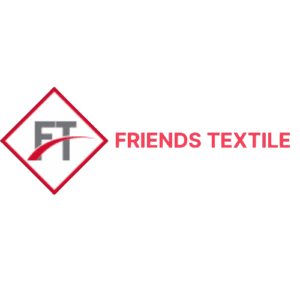Manufacturing
Let the Journey Begin
Spinning
Textile spinning is a process that converts raw fibers into yarn, pivotal in textile production. Raw fibers are cleaned, sorted, and carded for uniformity. Drawing aligns fibers, and optional combing refines them further. Roving, achieved through drafting and twisting, prepares fibers for spinning. In spinning machines, fibers twist into continuous threads, forming yarn. Plying, combining yarns, enhances strength and texture. The resulting yarn is wound onto bobbins or cones for use in weaving or knitting. This precise process determines yarn quality, influencing the characteristics of end products. Textile spinning’s artistry ensures the creation of high-quality yarn, shaping diverse textiles.
weaving
Weaving, a cornerstone of the textile industry, interlaces warp (longitudinal) and weft (horizontal) threads to form fabric. The process involves several key stages: warping aligns warp yarns on a frame, sizing reinforces them, and drawing-in threads through harnesses sets the pattern. During weaving, a loom operator raises and lowers harnesses to create a shed, through which the weft yarn is inserted. The reed then compresses the weft tightly against the previous rows. This cycle repeats until the desired fabric length is achieved. The woven fabric undergoes cutting and finishing processes, such as washing and dyeing, for enhanced quality. Weaving produces a diverse array of fabrics used in clothing, home textiles, and industrial applications.
Sizing and Bleaching
Sizing, a preparatory step in textiles, involves applying a protective coating (sizing agent) to warp yarns. This improves their strength and minimizes friction during weaving. Sizing agents can include starches or synthetic compounds. After application, the yarns are dried and wound onto beams. Sizing ensures smoother weaving and reduces yarn breakage.
Bleaching is a chemical treatment that lightens or removes color from fabrics. It involves treating the fabric with oxidizing agents, such as hydrogen peroxide, to break down color molecules. This process not only whitens fabrics but also removes impurities and stains. Proper rinsing and neutralization are crucial to prevent damage. Bleaching is often a preliminary step before dyeing or printing, ensuring uniform color absorption. It’s essential in achieving consistent and vibrant fabric hues.
Dyeing and printing
Dyeing infuses fabrics with color by immersing them in dye baths, ensuring even color penetration. Various dye types, such as natural, synthetic, and reactive, offer diverse color ranges.
Printing uses screens or rollers to apply colored designs onto fabrics, creating intricate patterns. Both processes involve chemical treatments and require careful color control and fixation. After dyeing or printing, fabrics are washed, dried, and finished to set the colors and enhance durability. These processes add vibrancy and uniqueness to textiles, reflecting trends and artistic expressions, enriching the fabric’s visual appeal and versatility.
finishing
Finishing is the final step that enhances fabric properties and appearance. It includes treatments like calendering, which smooths surfaces, and mercerization, enhancing strength and luster. Softeners improve fabric hand-feel, while flame-retardant finishes enhance safety. Water repellents and stain resistance treatments add functionality. Finishing may involve mechanical processes like shearing for a uniform surface. Chemical finishes improve dye absorption or create specialized effects. Once treated, fabrics are dried, steamed, or cured to set finishes. This step fine-tunes fabric characteristics, ensuring textiles are soft, vibrant, durable, and tailored to specific needs, whether for fashion, home decor, or technical applications.
Quilting and stitching
Quilting and stitching are captivating textile practices that blend artistry with precision. Quilting involves layering fabric, padding, and backing to form a composite textile. Stitching then intricately joins these layers, creating mesmerizing patterns that captivate the eye. The result is not just visually stunning but also functional, as quilts provide warmth and comfort.
Stitching, whether done by hand or machine, is the backbone of textile creation. It transforms fabric panels into garments, accessories, and home textiles. The meticulous interplay of needle and thread ensures strong seams, secure hems, and refined details. Each stitch is a testament to the skill and care invested in the process.
In both quilting and stitching, precision is key. Every thread counts, and the placement of each stitch determines the overall outcome. Whether it’s a meticulously pieced quilt or a flawlessly tailored garment, the harmonious collaboration of threads and fabric creates items that are both aesthetically pleasing and functionally reliable.
Quality Control and packaging
we hold quality as the cornerstone of our textile journey. Our skilled professionals meticulously oversee every stage, from fiber to finished product. Rigorous tests ensure fabric strength, colorfastness, and flawless finishing. Our commitment to excellence extends to packaging, where products are carefully inspected, folded, and sealed with precision. This attention guarantees that when you receive our textiles, you experience the same high standards we uphold. Trust us to deliver the best, from our hands to yours, ensuring your satisfaction and the integrity of our craftsmanship.
